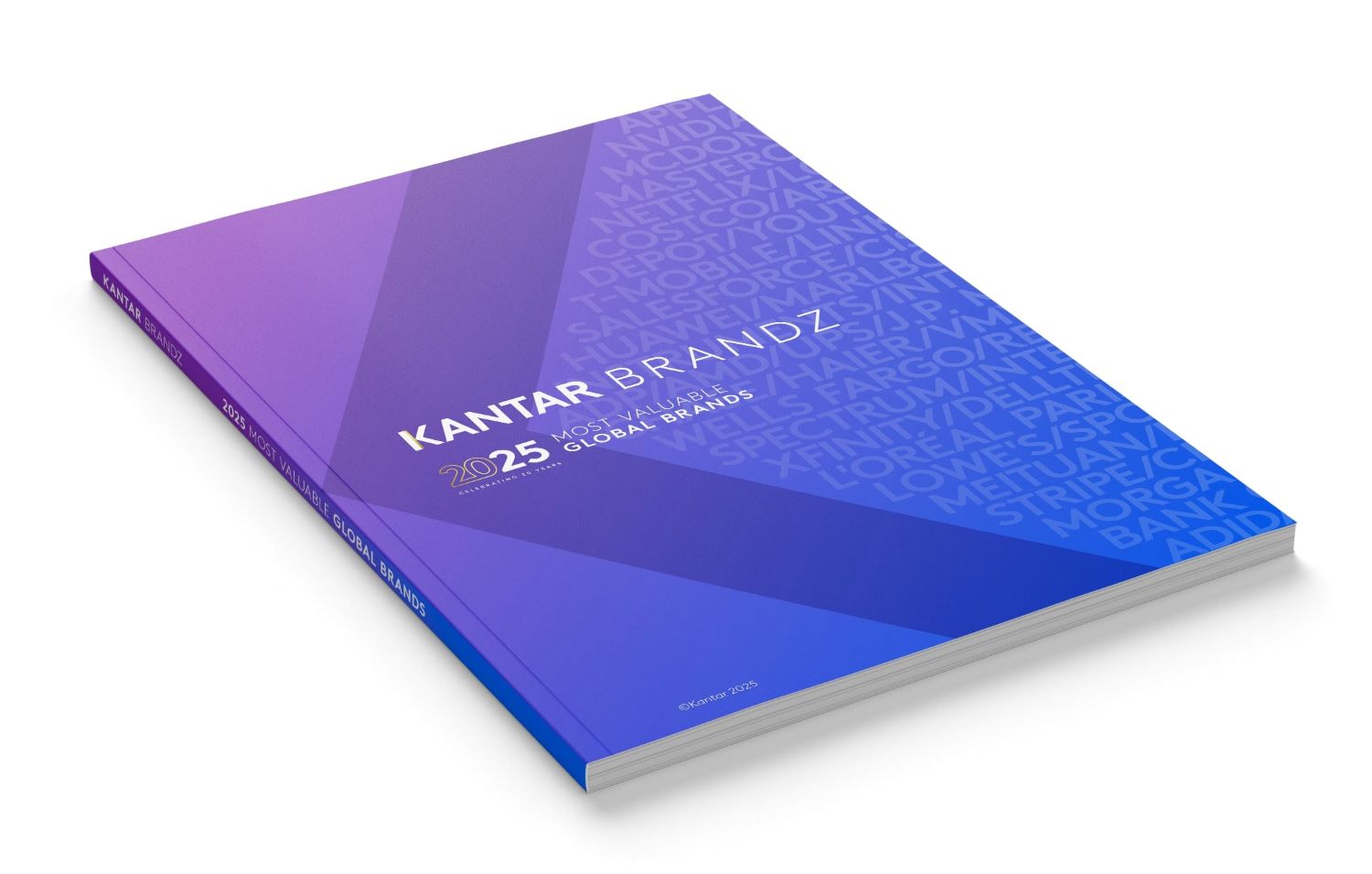In BrandZ’s Global Report, you’ll read a lot about how brands should be Meaningful, Different and Salient. What might not be immediately apparent is how media strategy connects to all of this. The answer is: closely and inextricably.
The first 20 years of Kantar BrandZ have unfolded alongside a media revolution. Indeed, the ranks of the world’s most valuable brands now include many new media players like Facebook, Instagram and TikTok.
For marketers, there are more media channels to choose from than ever before, but also, better tools to optimise these choices. These tools are important, as younger generations continue to reshape the media landscape and turn media effectiveness into a moving target.
The stakes are high. Kantar’s Context Lab has found that ad campaigns are seven times more impactful among a receptive audience. Marketers, then, need to know their audience, and specifically the channels on which that audience feels most receptive to advertising. In addition, publishing brands need to better explain the strengths of their advertising portfolio to advertisers; reach alone is not enough.
The good news is that consumer receptivity to advertising has ticked upwards of late. The Kantar Media Reactions 2024 survey found that 47% of global consumers had a positive view of ads in general. In 2020, that figure was just 24%. And in 2016, only 19% of global consumers responded positively to ads.
Looking at individual channels, the change is even clearer. Most ad types have seen improved receptivity since the 2010s, and the gains for newer formats like online video and gaming are especially pronounced. In 2012, only 28% of consumers viewed online video ads positively. Today, that number has risen to 54%. Gaming ads have seen a similar jump in receptivity, from 25% to 54%.
This shift didn’t happen overnight; a lot had to change before digital ads could be viewed more positively. People were less tech-savvy back in the early 2010s, a transitional era, during which digital and mobile advertising began to look very different from the original banner ads. Audiences suddenly had to deal with more intrusive ad formats in places they weren’t used to seeing ads.
For example, most online video ad formats were widely disliked in the early 2010s. It’s not just that these ads failed to achieve positive receptivity: they triggered aversion. Today, these strong negative reactions have largely gone away. Even pre-roll, mid-roll and mobile pop-up ads - once highly unpopular - are now tolerated, with between 5% and 12% of consumers viewing them positively. A decade ago, these numbers were hugely negative, around -45%.
As mentioned, one driver of this upward trend is that consumers have become more familiar with digital ad formats. But platforms and marketers also deserve credit for the ways that they have learned to make digital ads less disruptive. They are still innovating on this score as new ad formats and platforms reshape (and hopefully improve) how consumers engage with ads.
The media landscape continues to fragment, making campaign planning more complex, but marketers are quickly adjusting, as they have over the past 20 years.
Digital’s share of global media spend has comfortably exceeded that of broadcast TV in every This Year, Next Year report since 2016, and the trend continues. Today, more than half of marketers plan to increase investment in online video ads, TV streaming ads, influencer content and social media story ads. Meanwhile, traditional offline channels, especially broadcast TV, radio, cinema and print are set for further declines in spending.
In a sense, this investment shift represents less of a ‘win and lose’ and more of a balancing act. Many offline channels now have online variants that can offset some of the decline in traditional media spend. Many TV stations worldwide are no longer just offline broadcasters. Given this, it’s beginning to make less and less sense to talk about the battle between online and offline channels. Instead, it’s more accurate to say that we are heading toward a truly holistic media spend.
As a final point, it’s worth looking beyond consumer preferences and marketer spend to consider changes to the media landscape from a brand-building angle. Kantar’s LIFT+ database shows that even in the past five years, campaign contributions to brand KPIs have shifted noticeably. Broadcast TV still delivers the most brand impact, but its figures have decreased by around 15%. Meanwhile, all online channels have gained ground on brand impact. In-store and radio ads have also seen an upswing, contributing more to campaigns today than they did before 2018.
As culture and technology have evolved these past two decades, so too have consumer expectations. The best marketers have not only followed these media shifts but also driven changes of their own. The goal is always to build predisposition towards your brand, which means using the right combination of touchpoints and publishing partners for maximum impact.
Find more data-driven insights in the 20th anniversary edition of Kantar BrandZ’s Most Valuable Global Brands rankings and report now available at www.kantar.com/campaigns/brandz/global
For a quick read on a brand’s performance compared to competitors in a specific category, Kantar’s free interactive tool, BrandSnapshot powered by BrandZ, provides intelligence on 15,000 brands. Find out more here.
The first 20 years of Kantar BrandZ have unfolded alongside a media revolution. Indeed, the ranks of the world’s most valuable brands now include many new media players like Facebook, Instagram and TikTok.
For marketers, there are more media channels to choose from than ever before, but also, better tools to optimise these choices. These tools are important, as younger generations continue to reshape the media landscape and turn media effectiveness into a moving target.
The stakes are high. Kantar’s Context Lab has found that ad campaigns are seven times more impactful among a receptive audience. Marketers, then, need to know their audience, and specifically the channels on which that audience feels most receptive to advertising. In addition, publishing brands need to better explain the strengths of their advertising portfolio to advertisers; reach alone is not enough.
The good news is that consumer receptivity to advertising has ticked upwards of late. The Kantar Media Reactions 2024 survey found that 47% of global consumers had a positive view of ads in general. In 2020, that figure was just 24%. And in 2016, only 19% of global consumers responded positively to ads.
Looking at individual channels, the change is even clearer. Most ad types have seen improved receptivity since the 2010s, and the gains for newer formats like online video and gaming are especially pronounced. In 2012, only 28% of consumers viewed online video ads positively. Today, that number has risen to 54%. Gaming ads have seen a similar jump in receptivity, from 25% to 54%.
This shift didn’t happen overnight; a lot had to change before digital ads could be viewed more positively. People were less tech-savvy back in the early 2010s, a transitional era, during which digital and mobile advertising began to look very different from the original banner ads. Audiences suddenly had to deal with more intrusive ad formats in places they weren’t used to seeing ads.
For example, most online video ad formats were widely disliked in the early 2010s. It’s not just that these ads failed to achieve positive receptivity: they triggered aversion. Today, these strong negative reactions have largely gone away. Even pre-roll, mid-roll and mobile pop-up ads - once highly unpopular - are now tolerated, with between 5% and 12% of consumers viewing them positively. A decade ago, these numbers were hugely negative, around -45%.
As mentioned, one driver of this upward trend is that consumers have become more familiar with digital ad formats. But platforms and marketers also deserve credit for the ways that they have learned to make digital ads less disruptive. They are still innovating on this score as new ad formats and platforms reshape (and hopefully improve) how consumers engage with ads.
How should brands adapt as technology, culture and consumption habits continue to shift?
The media landscape continues to fragment, making campaign planning more complex, but marketers are quickly adjusting, as they have over the past 20 years. Digital’s share of global media spend has comfortably exceeded that of broadcast TV in every This Year, Next Year report since 2016, and the trend continues. Today, more than half of marketers plan to increase investment in online video ads, TV streaming ads, influencer content and social media story ads. Meanwhile, traditional offline channels, especially broadcast TV, radio, cinema and print are set for further declines in spending.
In a sense, this investment shift represents less of a ‘win and lose’ and more of a balancing act. Many offline channels now have online variants that can offset some of the decline in traditional media spend. Many TV stations worldwide are no longer just offline broadcasters. Given this, it’s beginning to make less and less sense to talk about the battle between online and offline channels. Instead, it’s more accurate to say that we are heading toward a truly holistic media spend.
As a final point, it’s worth looking beyond consumer preferences and marketer spend to consider changes to the media landscape from a brand-building angle. Kantar’s LIFT+ database shows that even in the past five years, campaign contributions to brand KPIs have shifted noticeably. Broadcast TV still delivers the most brand impact, but its figures have decreased by around 15%. Meanwhile, all online channels have gained ground on brand impact. In-store and radio ads have also seen an upswing, contributing more to campaigns today than they did before 2018.
As culture and technology have evolved these past two decades, so too have consumer expectations. The best marketers have not only followed these media shifts but also driven changes of their own. The goal is always to build predisposition towards your brand, which means using the right combination of touchpoints and publishing partners for maximum impact.
Find more data-driven insights in the 20th anniversary edition of Kantar BrandZ’s Most Valuable Global Brands rankings and report now available at www.kantar.com/campaigns/brandz/global
For a quick read on a brand’s performance compared to competitors in a specific category, Kantar’s free interactive tool, BrandSnapshot powered by BrandZ, provides intelligence on 15,000 brands. Find out more here.





